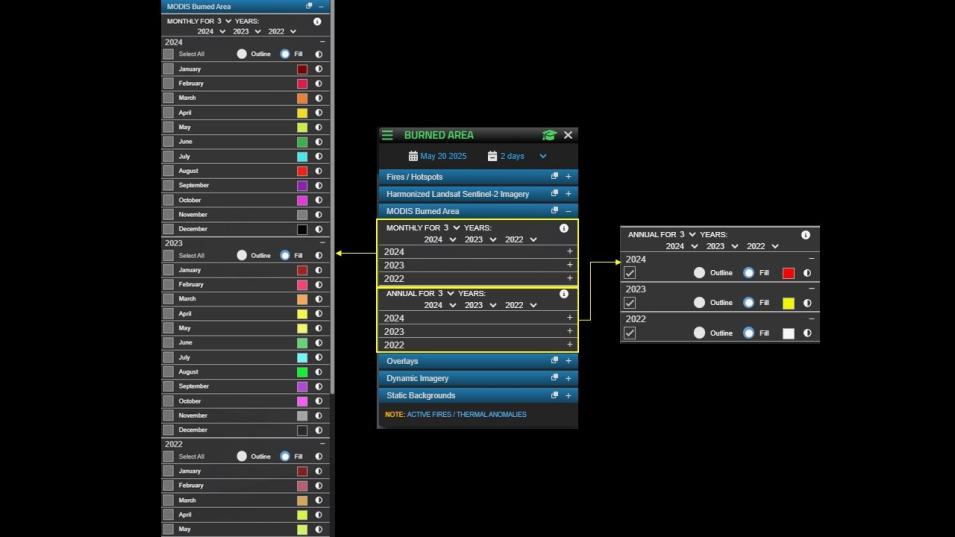The Fire Information for Resource Management System (FIRMS) recently updated the user interface for manipulating and displaying the 500 m Moderate Resolution Imaging Spectroradiometer (MODIS) Burned Area product (MCD64A1) in the map viewer for FIRMS Global and FIRMS US/Canada. This will enable users to interrogate the data further and inform questions such as: which areas consistently burn year after year and burn at the same time of year? Which most recently burned areas are adjacent to previously burned areas? Are there some areas that are more susceptible to burning due to their location next to a previously burned area? Is there a relationship between the timing and amount of area burned relative to climate cycles or extremes?
The MODIS burned area product is compiled as a monthly dataset that spans the entire MODIS data record (late 2000 to present). Previously, FIRMS users could display one or more of the 12 monthly datasets for a selected calendar year. The updated burned area user interface allows users to simultaneously display and compare individual monthly burned area products, as well as monthly products aggregated into annual datasets for one to three user-selected years. The updated interface is accessible in the "Advanced Mode" and "Burned Area" mode of the FIRMS map viewer.


